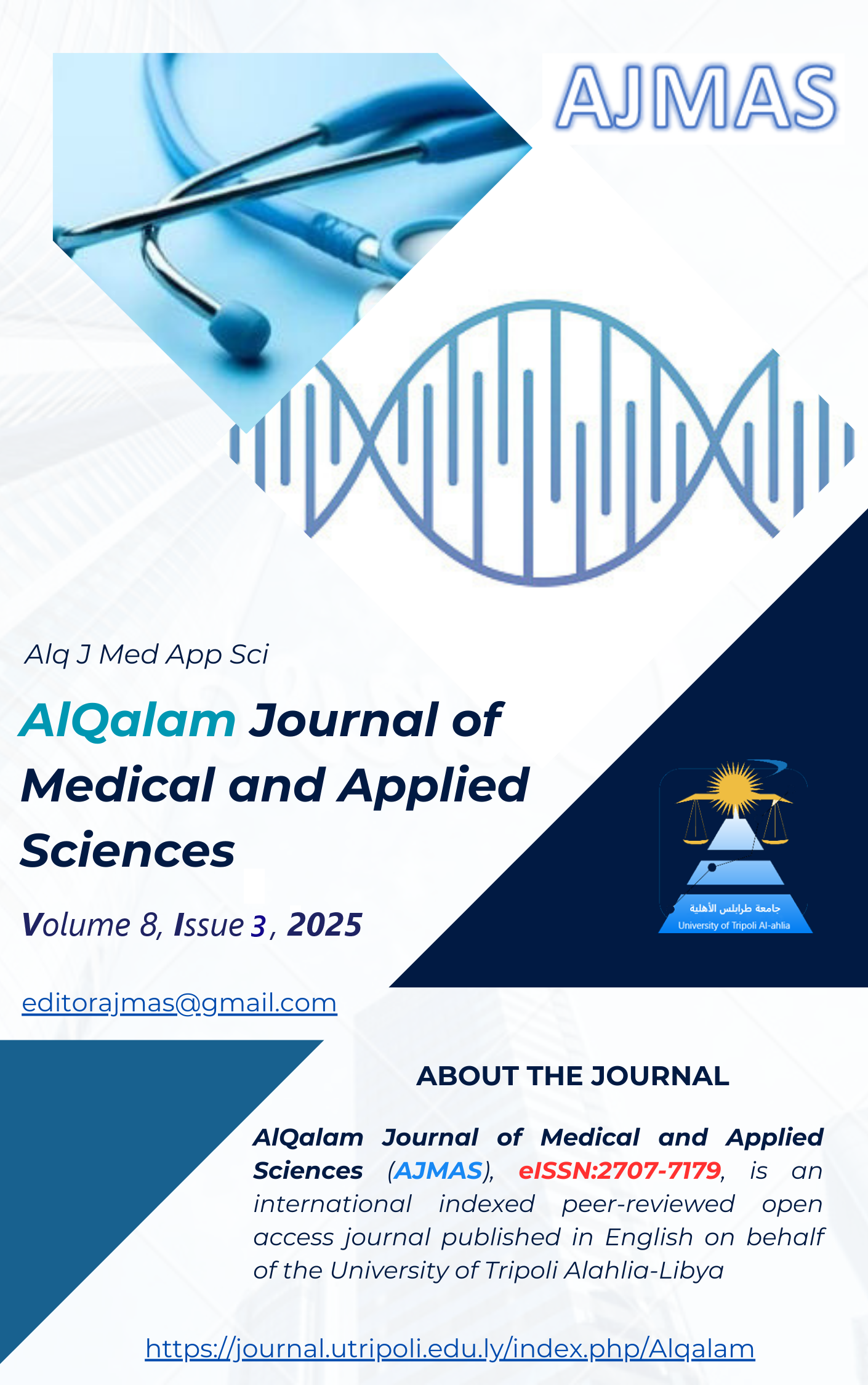Chemical Analysis of Sidr and Thyme Honey Using GC-MS and Assessment of Their Antibacterial Effects Against Some Diabetic Foot Infections in Ajdabiya, Libya.
DOI:
https://doi.org/10.54361/ajmas.258373Keywords:
Antimicrobial resistance, Chemical Composition, diabetic foot ulcers, Natural honey, GC–MS.Abstract
This study aimed to evaluate the chemical composition of sidr and thyme honey, and to assess their antibacterial activity against pathogenic bacteria isolated from diabetic wound infections in Ajdabiya, Libya, as well as their antibiotic susceptibility profiles. Fifty bacterial isolates were obtained from patients at Mohammed Al-Magarif Central Hospital, with Staphylococcus aureus (88%), Escherichia coli (8%), and Pseudomonas aeruginosa (4%) being the most common species. Antibacterial testing at honey concentrations of 50%, 70%, and 90% (v/v) revealed concentration-dependent inhibition, with 90% producing the largest zones: 31 mm (S. aureus), 26 mm (P. aeruginosa), and 15 mm (E. coli), while no inhibition of E. coli occurred at 50%. Sidr honey showed slightly higher activity than thyme honey. To better understand these effects, GC–MS analysis was performed, revealing a diverse profile of fatty acids, alcohols, hydrocarbons, and esters. Oleic acid (22%) and capric acid (16.3%) predominated in Sidr honey, while linolenic acid (16.5%) and hexadecanoic acid ester (18.2%) were abundant in thyme honey. These findings link the honeys’ chemical composition to their antibacterial potential, supporting their use as complementary treatments for diabetic wound infections and encouraging further studies on bioactive compounds and in vivo efficacy.
Downloads
Published
How to Cite
Issue
Section
License
Copyright (c) 2025 Fatma Elfallah, Fatima Abdalla, Khadija Gashgash, Fatma Shakmak

This work is licensed under a Creative Commons Attribution 4.0 International License.















